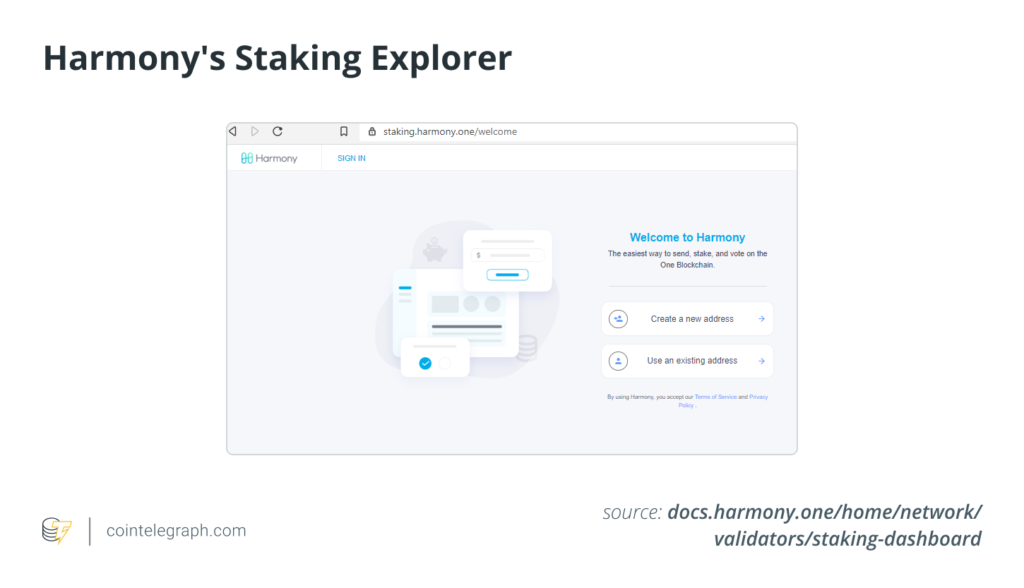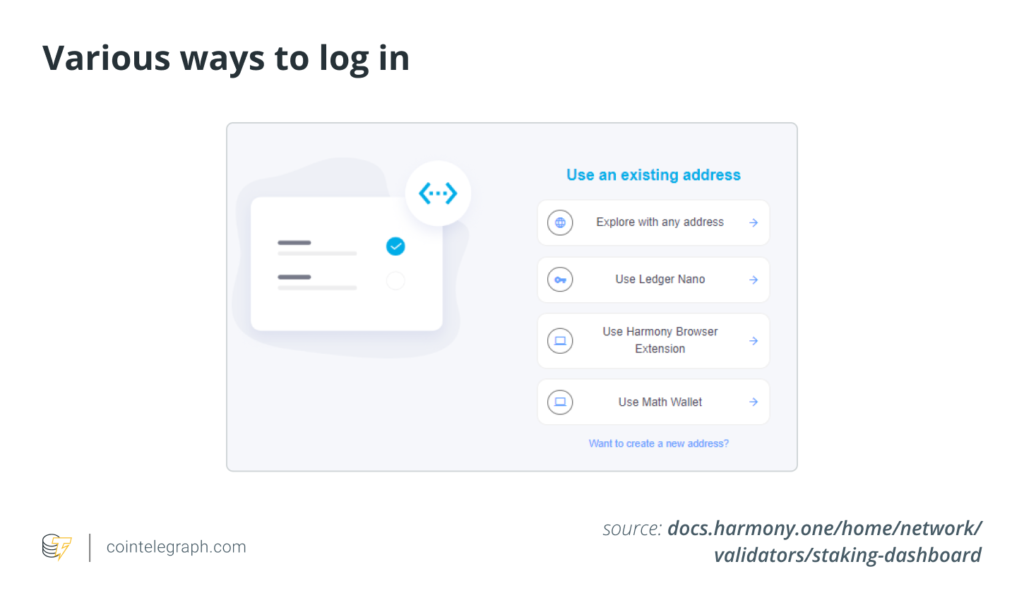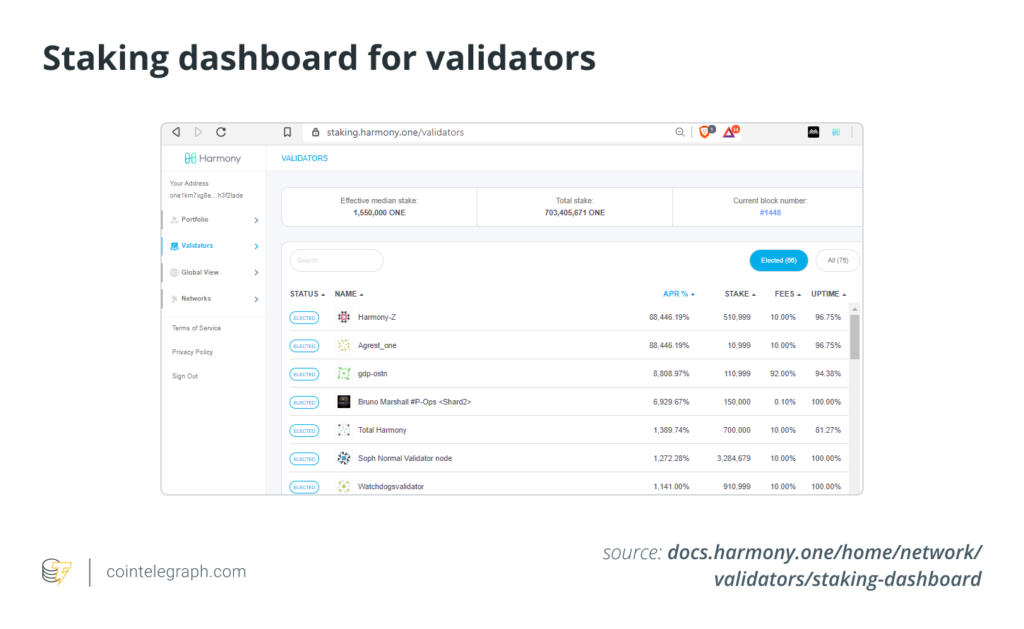Because it addresses fundamental blockchain issues, is energy-efficient, has cross-chain capabilities, charges cheaper gas prices, and has a great potential for nonfungible currencies, Harmony is gaining a lot of support (NFTs).
Maintain decentralization and security
Because of the use of sharding, which separates validators into various groups and enables them to approve transactions and new blocks concurrently, Harmony believes its network can scale while retaining decentralisation and security. As one of the biggest payment networks in the world, Visa, Harmony can now process 2,000 transactions per second (TPS). Harmony predicts that over time, it will process 10 million TPS.
Contrarily, even as it scales, Harmony maintains security and decentralisation. For instance, the network uses a distributed randomness generation process to divide the nodes, or computers, into different shards after they join the network and validate transactions. In order to maintain decentralisation, Harmony maintains the minimal amount of ONE tokens needed for nodes to join the network as validators at
Energy-efficient
The proof-of-stake approach, which Harmony has used since its beginning, is currently being adopted by several blockchain networks. In order to have a chance of being selected at random to validate transactions, nodes must therefore offer actual tokens as collateral in this process. Transactions must be verified by numerous validators before a block can be accepted. Because of its unique architecture and proof-of-stake consensus algorithm, Harmony is able to process blocks in less than two seconds, making it stand out from other networks.
Cross-chain capabilities
In addition, Harmony unveiled Horizon, a bridge for cross-chain interoperability with Ethereum that enables the exchange of assets between the two networks. Cross-border payments could be revolutionised by this development, and cryptocurrency exchanges could become more practical. Other blockchains like Binance have ties with Harmony as well.
Harmony’s technology can transmit data between different blockchain networks, regardless of whether they use proof-of-stake or proof-of-work governance, by enabling nodes on other blockchain networks to validate transactions.
Lower gas fees
Due to its high TPS and use of proof-of-stake validation, Harmony’s network seldom experiences congestion. It no longer has significant gas fees because they are only a cent per transaction on Harmony these days.
Contrarily, a network like Ethereum has much higher levels of overall demand and transaction volume than Harmony. However, Harmony asserts that even when the network is completely utilised and experiencing extraordinarily high demand, congestion problems may be resolved by simply adding more shards.
Huge potential for NFTs
NFTs, which are safe digital artwork, video, and audio assets that may be transmitted over a blockchain network, have some interesting new possibilities thanks to the network’s cross-chain capabilities. Additionally, the network might be appealing to developers looking to mint NFTs due to lower gas costs.
Harmony claims that while bridging NFTs from one network to another may initially be expensive, subsequent transactions will be cheap. Additionally, Harmony revealed on Twitter that it is developing features like as fractionalization, NFT lending, and NFT verification.
What is Harmony(ONE) crypto?
A blockchain-based platform called Harmony (ONE) promises to solve the problem of obtaining scalability and decentralisation without compromising either.
In May 2019, Harmony (ONE) was introduced as a component of the Binance Launchpad’s initial exchange offering (IEO). It aims to act as a link between scaling and decentralisation initiatives. It was created with the idea of “decentralisation at scale,” putting an emphasis on data sharing and the development of markets for fungible tokens and nonfungible assets.
In addition, Harmony guarantees high throughput with two “lows”: latency and expenses. When combined, they’re anticipated to place the platform at the core of initiatives to lay the foundation for upcoming decentralised trustless economies.
Before the IEO, in 2018, Harmony officially launched as a business. But who is Harmony (ONEcreator? )’s In April 2019, it raised $18 million from a number of investors, including Silicon Valley’s Consensus Capital and Hong Kong’s Lemniscap VC, among others. With $12.6 billion set aside for pre-mining, investors purchased about $2.8 billion worth of the company’s ONE tokens.
With an emphasis on data sharing, decentralised marketplaces, supply chain monitoring, ad exchanges, credit rating systems, and gaming, Harmony gives investors access to an ecosystem that will enable the company’s adoption across a range of industries.
What is ONE?
The Harmony consensus methodology makes use of the ONE token as a stake. Holders are rewarded for ensuring that the system functions properly and can win block rewards.
Similar to many other layer 2 (L2) platforms, Harmony offers a community token called Harmony ONE that emphasises the protocol’s goal of facilitating open consensus processes for billions of people worldwide.
All platform features and activities, like as voting, transaction fees, gas fees, staking, and earning incentives, are paid for with the Harmony ONE token.
Up until March 2020, the Harmony ONE token featured a dynamic inflation schedule. The inflation rate was then modified to a fixed annual rate.
How does Harmony ONE work?
Harmony increases scalability and quickens transaction and block generation by using random state sharding.
In order to reduce latency, the network can split the database up into smaller units called shards using random state sharding. Additionally, sharding prevents network congestion while enabling nearly instantaneous transactions.
The distributed randomness generating process used by the sharding technique is based on an adaptive proof-of-stake (PoS) consensus mechanism. With this setup, security, scalability, and straightforward verification are all possible.
The Harmony network uses a BFT protocol variation called Fast Byzantine Fault Tolerance (FBFT). By processing transactions simultaneously, FBFT increases the speed and effectiveness of the Harmony network. Harmony simultaneously reduces communication costs by signing transactions using an aggregate signature, enabling 250 or more validators to come to an agreement in less than two seconds.
What network does Harmony ONE use?
With a mainnet that functions on the Ethereum network and a 2-second transaction finality time and 1,000 times lower costs than Ethereum, Harmony is an open and quick blockchain.
The Ethereum network-based Harmony (ONE) blockchain is an L2 blockchain platform that makes it simpler for developers to build decentralised applications (DApps).
More cryptocurrencies are creating scaling solutions in an effort to unseat Ethereum as the most popular network for creating DApps as a result of the high gas fees on Ethereum. Contrary to many other platforms in this category, Harmony cooperates rather than competes with Ethereum.
How to buy Harmony ONE?
The most convenient way to buy Harmony is through a cryptocurrency exchange, but trading Harmony ONE coins is not supported via the Coinbase app or wallet.
The following are the steps for purchasing Harmony ONE:
Compare cryptocurrency exchanges that support ONE: You’ll need to do some research to choose which cryptocurrency exchange is the best fit for you because fees, security, and payment options vary among them. Being a beginning, you don’t require a large variety of features, and you may easily modify exchanges later.
On a trading platform, set up a trading account: Go to the exchange’s website to register an account there. Clicking “sign up” will take you to a screen where you may create an account and enter your personal details, such as your name, email address, and a proof of address, among other things.
Adding money to your account: Use a bank transfer, credit card, debit card, or Bitcoin from a cryptocurrency wallet to fund your account in order to buy Harmony.
Order Harmony: Then, finish making your Harmony purchase by entering the desired amount and clicking “buy.”
What is Harmony ONE staking and how to stake Harmony ONE?
The staking explorer allows Harmony ONE token owners to assign their tokens to active validators. You can take part in Harmony’s staking as a validator or a delegator.
In that you delegate (in this case, delegation means bonding with the smart contract, not actually transferring) your Harmony tokens to that validator to enable network decentralisation, security, and performance, staking Harmony tokens to a specific network validator may resemble making a bank deposit. As part of this initiative, people that staked their ONE tokens are compensated.
For delegators
The most important approach for individuals who want to stake but don’t want to run a validator to earn block rewards is delegation. The delegator will receive a piece of the block reward earned by the validator if the tokens are delegated to an elected validator (according to section block reward).
The block rewards that the delegators received are kept in a separate reward balance and can be transferred straight to the delegator’s account balance. To benefit from the staking’s compounding effect, the block rewards can be staked once more.
Your delegated tokens are also connected to reducing the risks for the validator. You should carefully select validators as a delegator based on performance metrics from the past, such as uptime and commission. You should also distribute your delegations among
For validators
As seen in the graphic below, the Staking Explorer makes it simple to delegate, transmit payments, and see validator information.

Your ONE address will be utilised for any transactions even though you can view the dashboard without it. As seen in the image below, you can log into an account using the Ledger Nano S, MathWallet Chrome Extension, or Harmony Chrome Extension.

After login in, you may view network information, a list of validators, validator profiles, and other data to help you decide who to delegate to, as seen in the image below.

Every delegation or transaction requires a signature. You can utilise the Harmony Chrome Extension, which works with the Ledger Nano S.
How to choose a Harmony ONE wallet?
There are many ways to store Harmony cryptocurrency, including Google Chrome plugins, hardware, software, and online wallets.
The Google Chrome plugin for the Harmony ONE wallet is easy to install and much easier to use. The type of third-party wallet you use will probably depend on how much you need to keep and what you intend to do with it. There are a tonne of them available for storing ONE.
The safest way to store and backup cryptocurrencies is via hardware wallets, sometimes referred to as “cold wallets,” like Ledger or Trezor. However, they are more expensive and call for more technical expertise. Therefore, more knowledgeable users might be better suited to store larger amounts of ONE.
Software wallets provide an alternative that is cost-free and easy to use. They may, for instance, be custodial or non-custodial and be downloaded as desktop or smartphONE programmes.
Custodial wallets handle and store your private keys on your behalf on behalf of the service provider. Non-custodial wallets use security components to store private keys on your device. While they are practical, hardware wallets are more secure and may be more appropriate for smaller groups of ONE or more novice users.
Online wallets can be accessible from a variety of devices using a web browser and are also cost-free and easy to use. Hot wallets, on the other hand, are viewed as hazardous and may not be as secure as hardware or software alternatives.
Make sure the platform is a trustworthy source with a solid track record in security and custody because you’ll be entrusting it with your ONE. They are therefore ideal for those who trade regularly or hold a small amount of cryptocurrencies.